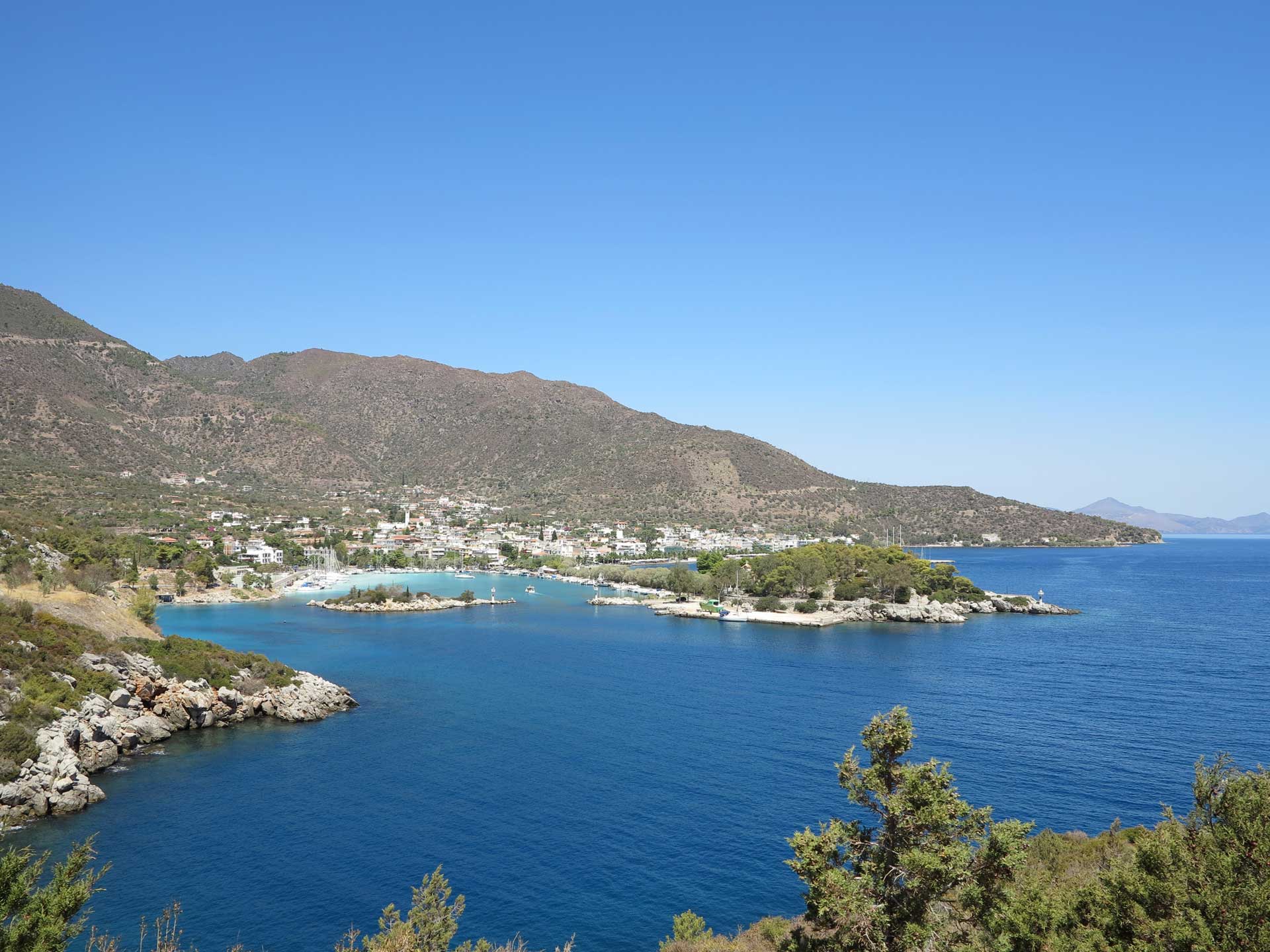Methana Thermal Springs “Ai Pigai”
Useful
Information
25is Martiou 103, Methana 180 30, Greece
Informations
Address:
25is Martiou 103, Methana 180 30, Greece
Methana Thermal Springs “Ai Pigai”
The thermal springs of Methana are the result of volcanic activity, renowned for thousands of years for their effective and saving effect on health and beauty. Texts by Pausanias, Strabo, Ovid testify to their existence and fame since ancient times. Nature has generously gifted the thermal waters of Methana with valuable ingredients in large quantities and of enormous therapeutic importance, which justifies their uniqueness and special place in the history of thermal springs, not only in Greece but also in Europe. The water gushing from the springs are filled with numerous valuable trace elements of metals and minerals that offer a unique treatment for many ailments and a general rejuvenation of the body no matter the age. Here lies the mythical magic of the ancient secret related to skin care, since the skin regains its elasticity and is freshness, while you will get the perfect look and a sense of youth and vitality.
The springs have beneficial therapeutic properties for many diseases such as arthropathy, disc disease, spondyloarthritis, rheumatism, fractures, gynecological diseases, infertility, nerves, fatigue, respiratory system diseases, chronic bronchitis, skin diseases, etc.
The natural resource “Methane Spring (Ai Pigai)” at the Municipality of Troizinia, has a water temperature of 26.5°C, electrical conductivity (m.o.): 55550 μS/cm, active acidity (Ph) (m.o.): 6.8,
Radioactive elements: radon (Rn) (m.o. .o.): 5.1± 0.4 Bq/I, Radium (Ra) (m.o.): 0.2± 0.1 Bq/I, Uranium (U): < 0.5 Bq/I.
Chemical elements: Na, CI, K, Br and gases: H2S, C02.
Supply in cubic meters per hour: 25 m3/h.
The natural resource is characterized and identified as: Hypothermic, Saline, Hypertonic, Chlorosodium, Potassic, Bromide, Moderate Carboniferous, Strong Sulphide.
Use: Bath therapy.
Medicinal properties:
Indications: Rheumatic diseases, chronic rheumatism, sciatica, back pain, nervous system diseases.
Contraindications: Heart disease, edema of the lower extremities, coronary disease, cerebral hemorrhages or blood vessel thrombosis, malignant neoplasms, nervous and mental diseases, active tuberculosis, joint pathology, secretory eczema, pregnancy after the sixth month.
Source: Greek Goverment Gazette 1497/Β/03.05.2019





